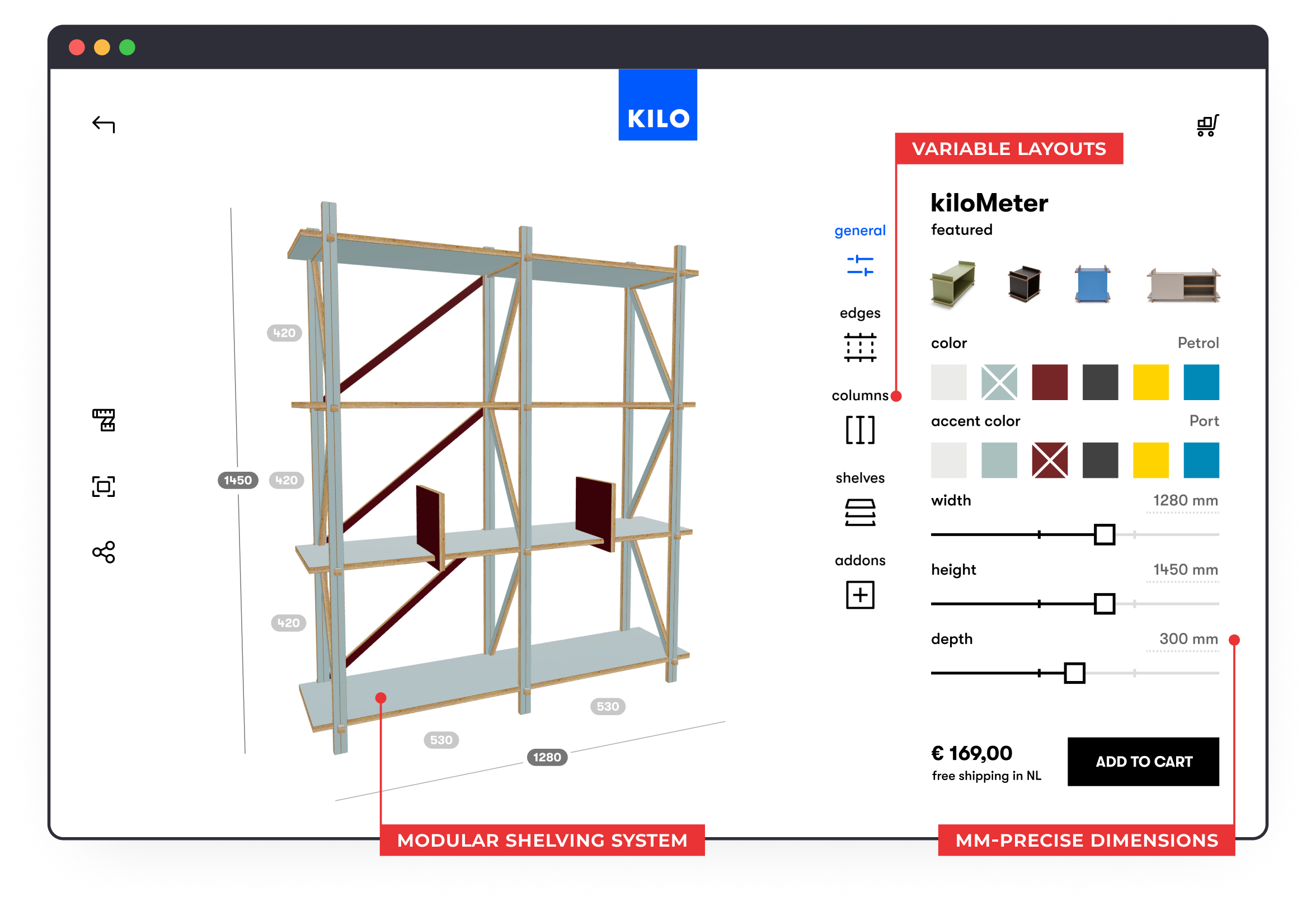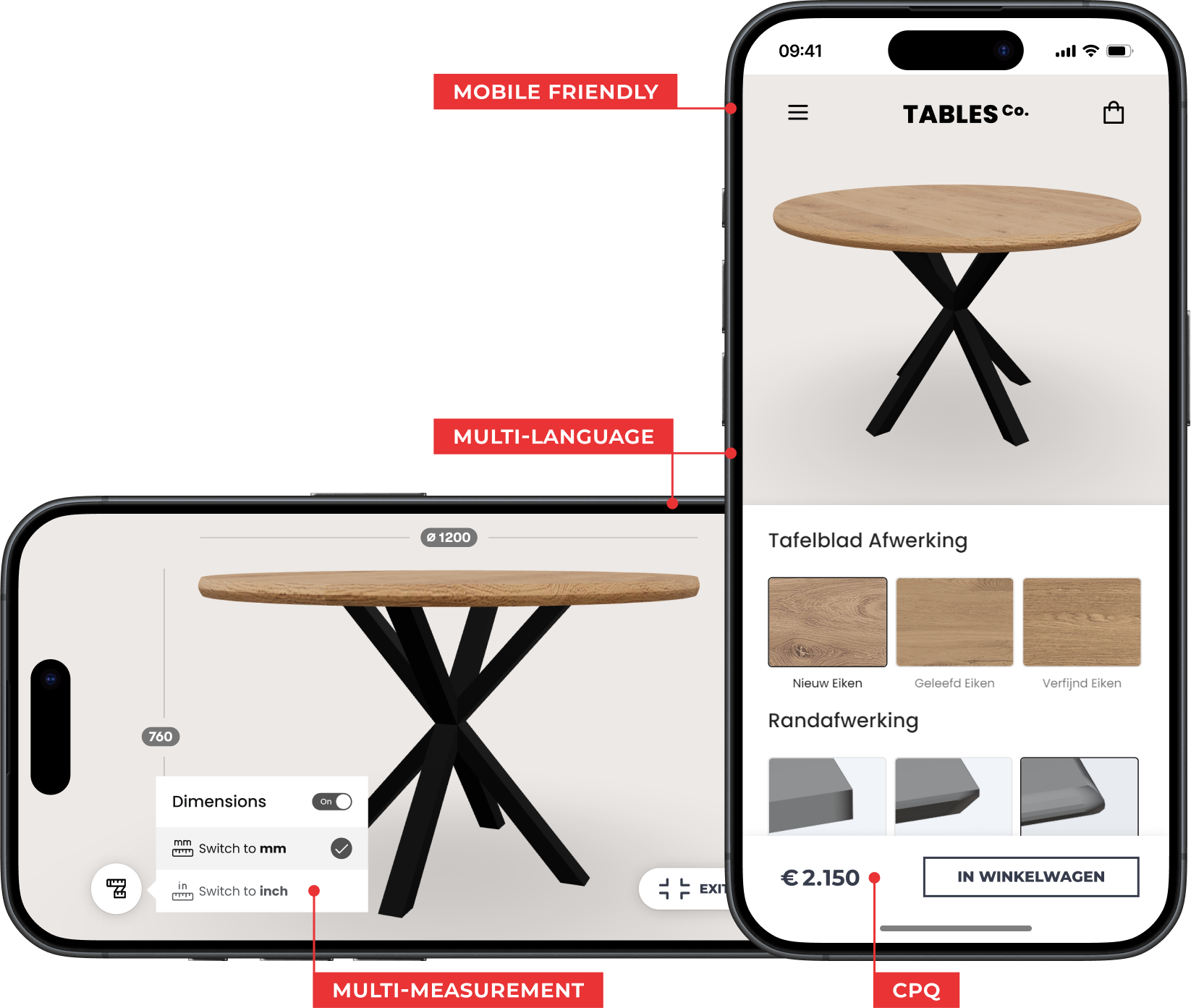
CUSTOM CONFIGURATOR QUIZ
Off-the-Shelf vs. Custom Furniture Configurator: What’s Best for Your Business?
Take the quiz and find out in less than 5 minutes what your Furniture company needs!
If you're looking for a furniture configurator, you've probably asked yourself whether a simple tool will do or if you need a custom solution. It mostly depends on your products, branding, sales goals, and integration needs.
Take this short quiz and get personalized advice based on your results!
1
Product Complexity & Configuration Rules
The more complex your products are, the more rules and logic your configurator needs to handle. If customers can only choose colors or materials, a basic 3D furniture configurator may work. But if you offer modular furniture with adjustable dimensions, you need a more advanced solution.
How Customizable Are Your Products?
Can Your Buyers Configure Multiple Components Together?
2
Sales Conversions and Scalability
Some businesses simply need to visualize products, while others require features such as real-time pricing, mobile-friendly design, or international growth capabilities. Your sales strategy and scalability needs will determine the right furniture configurator choice for you.
How Important Is Real-Time Pricing in Your Configurator?
What Role Does Mobile Play in Your Sales Strategy?
Do You Need Multi-Language or Multi-Measurement Support?
Brand Positioning and Differentiation
For some furniture brands, standing out with a unique, high-end experience is a priority, and in that case, a 3D configurator isn’t just a tool—it’s part of the brand experience. Others only want a simple tool to showcase product options. How you approach branding will guide your needs.
3
What Role Does Brand Differentiation Play in Your Marketing?
Do You Want to Use Innovation to Differentiate Your Brand?
How Much Control Do You Need Over the Configurator’s Branding?
Do You Want to Generate Marketing Content from the Configurator?
System Integration & Automation
Some businesses need their furniture configurator to sync with sales, ERP, or manufacturing systems, while others can operate without integration. If automating orders, generating BOMs, or streamlining production is important, your 3D configurator should support those needs.
4
Do You Need the Configurator to Integrate with Your Sales or Manufacturing Systems?
Do You Need to Generate and Export Files, Drawings and Documents?
Production Dashboard for KILO Furniture Configurator
The configurator nests product parts on plywood and generates G-code for CNC machines, along with stickers for labeling each furniture part. These features streamline the entire manufacturing process and minimize errors.
Results: Take the Quiz First!
Answer all questions to see results.Results: A Basic Off-the-Shelf 3D Configurator Might Be Enough
Your business likely requires a straightforward configurator that allows customers to select colors, materials, or fixed sizes without complex customization. You may not need real-time pricing, deep branding customization, or system integrations, making a plug-and-play solution a cost-effective and efficient choice.Results: A Semi-Custom 3D Furniture Configurator Could Be the Right Balance
You’re looking for more than just a basic configurator, but you don’t necessarily need a fully custom-built solution. You likely need some branding customization, rule enforcement for product configurations, and features like real-time pricing or multi-language support. However, system integrations might not be essential right now.Results: A Fully Custom 3D Furniture Configurator Is the Best Fit
Your business requires full control over the configurator’s branding, functionality, and integrations. Whether it's complex modular product rules, multi-language and multi-measurement support, advanced pricing, or ERP and manufacturing system integrations. An off-the-shelf solution won’t support your needs.“The best 3D configurators do more than showcase products—they optimize the entire process. When done right, they improve the buying experience, streamline workflows, shorten sales cycles, reduce errors, and drive higher conversions.”






